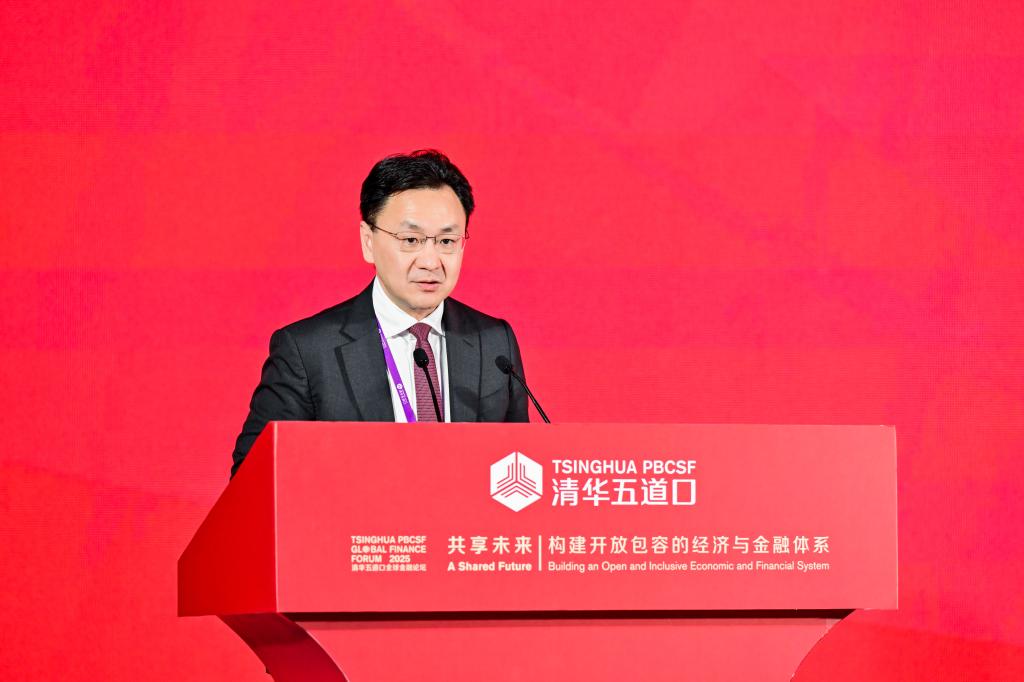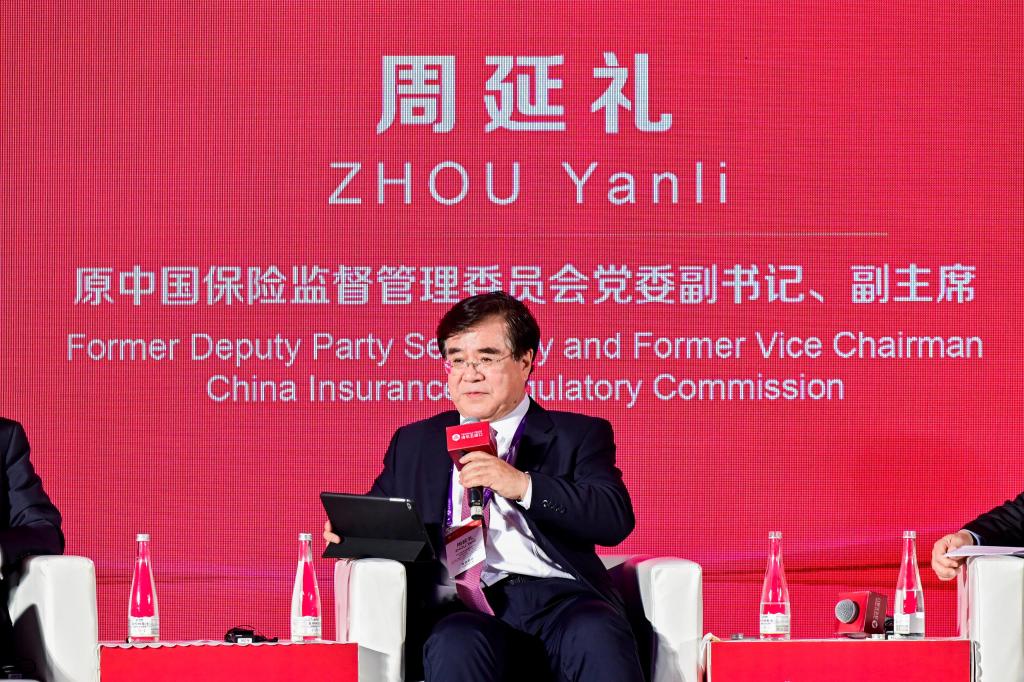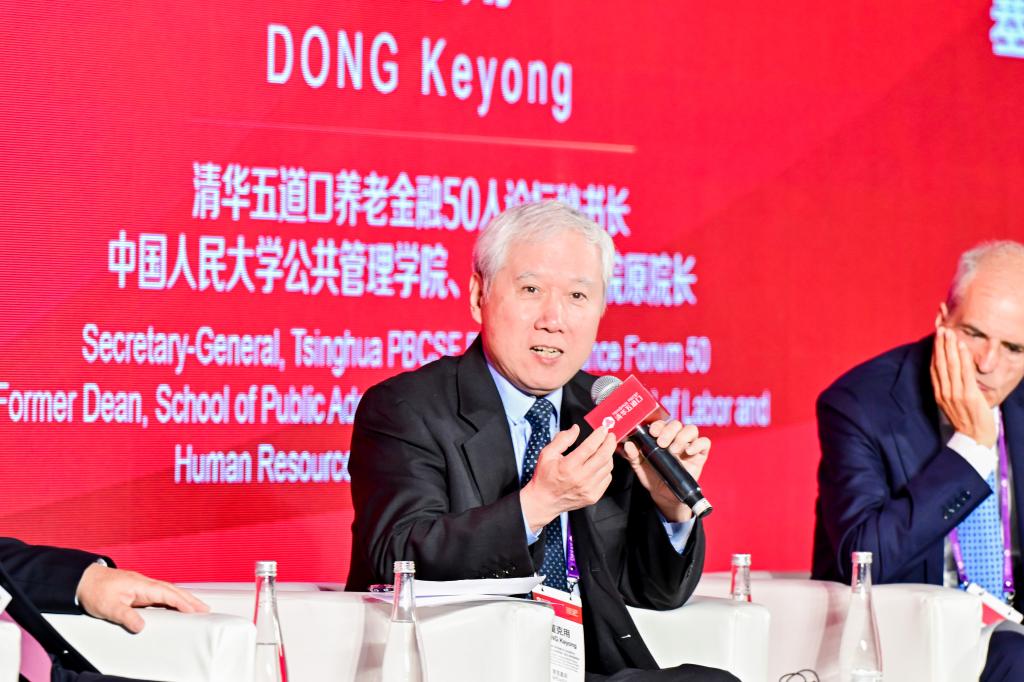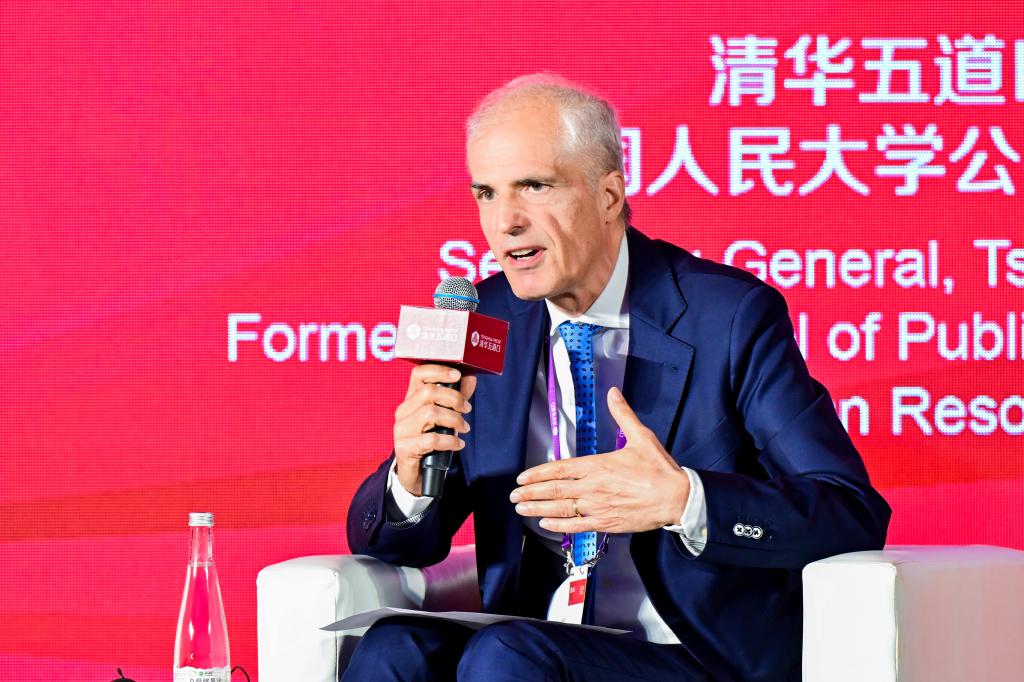On May 17–18, 2025, the 2025 Tsinghua PBCSF Global Finance Forum was successfully held in Shenzhen. As a key segment of this year’s forum, Session XI, titled “Opportunities and Challenges of an Aging Population,” brought together leading experts to explore the development of global pension finance systems, the deep economic implications of demographic shifts, and institutional responses under the synergy of policy and markets. The session was moderated by Dr. Wei Chenyang, Research Fellow at Tsinghua University PBC School of Finance, Director of the Research Center for China Insurance and Pension Finance, and Director of the Finance MBA Center. The discussion took the format of a roundtable dialogue.

Photo: Session XI
Four distinguished guests joined the forum: Masaaki Shirakawa, former Governor of the Bank of Japan and Distinguished Guest Professor at Aoyama Gakuin University; Zhou Yanli, former Vice Chairman and Deputy Party Secretary of China Insurance Regulatory Commission (CIRC); Dong Keyong, Secretary-General of the Tsinghua PBCSF Pension Finance 50 Forum and former Dean of the School of Public Administration and the School of Labor and Human Resources at Renmin University of China; and Sergio Balbinot, former President of Insurance Europe . The experts engaged in in-depth discussions on pension reform, the financial implications of demographic changes, and international insights in addressing global aging trends.

Photo: WEI Chenyang
Opening the forum, Dr. Wei Chenyang emphasized that the deepening global aging trend is expected to pose unprecedented challenges across healthcare, economic systems, and financial security. While increased life expectancy is a positive sign of progress, the profound demographic transition requires more resilient and equitable pension system. He highlighted the urgent need for countries like China, with its large and aging population, to adopt systematic thinking in building sustainable pension finance infrastructure, supported by transparent regulation and long-term capital allocation aligned with social development goals.

Photo: Masaaki Shirakawa
Masaaki Shirakawa pointed out that rapid aging and declining birth rates are already constraining economic development in Japan by reducing productivity, hindering innovation, and causing misallocation of resources. He stressed the importance of reallocating resources to enhance efficiency, noting the positive impact of delayed retirement and higher labor force participation. Shirakawa also emphasized that the sustainability of pension finance depends on the dependency ratio and economic growth. While raising the birth rate is often cited as a solution, he noted it remains a culturally sensitive issue that reflects societal values and structural choices.

Photo: ZHOU Yanli
Zhou Yanli emphasized that personal pension systems, supported by policy and driven by market mechanisms, should prioritize inclusivity, particularly for low- and middle-income earners, to enhance both expectations and resilience. He called on financial institutions to focus on long-term, stable-return pension products with suitable maturities, while also strengthening investor protection. Zhou advocated for Default Investment Option rules to promote sound investment behavior. Regulators, he emphasized, should ensure institutions “share returns with the public” by enhancing safety, improving returns, and improving service quality to ensure fairness and sustainability.

Photo:DONG Keyong
Dong Keyong identified three major challenges facing China’s pension finance development: (1) an imbalanced three-pillar system with Pillars II and III remain underdeveloped; (2) significant urban–rural and regional disparities in pension benefits, with agricultural populations underserved; and (3) limited enterprise annuity coverage, currently covering only about 10% of employees. He proposed stronger tax incentives and simplified participation procedures to promote the growth of pillar II. Moreover, he recommended supporting small and medium-sized enterprises in establishing annuity plans based on employee willingness, rather than imposing uniform mandatory participation.

Photo:Sergio Balbinot
Sergio Balbinot discussed the European experience, noting that while Europe’s three-pillar pension framework resembles that of China, it places greater emphasis on incentives and product flexibility. He highlighted the critical role of tax breaks and fiscal subsidies in boosting individual participation, and advocated for the adoption of lifecycle-based asset allocation to reflect varying risk preferences over time. To address challenges such as high costs and low transparency, Europe is pushing forward with reforms in commission structures, financial literacy, and fee disclosures. Balbinot further noted that European pension funds are increasingly viewed as “patient capital” supporting ESG investment and the green transition, reinforcing economic growth. He stressed the importance of balancing regulatory requirements with client value to enhance the system’s sustainability and public trust.
In closing, Dr. Wei Chenyang emphasized the importance of drawing from global best practices while recognizing the need for innovative solutions to the unique challenges China is facing. He called for the integrated efforts of policy, market forces, and regulatory systems to build a forward-looking pension finance ecosystem. By leveraging policy incentives, long-term pension capital can serve as a powerful driver for economic development, green transformation, and sustainable growth. He concluded by encouraging continued cross-sector collaboration and institutional innovation to jointly advance a more resilient and sustainable pension system for the future.